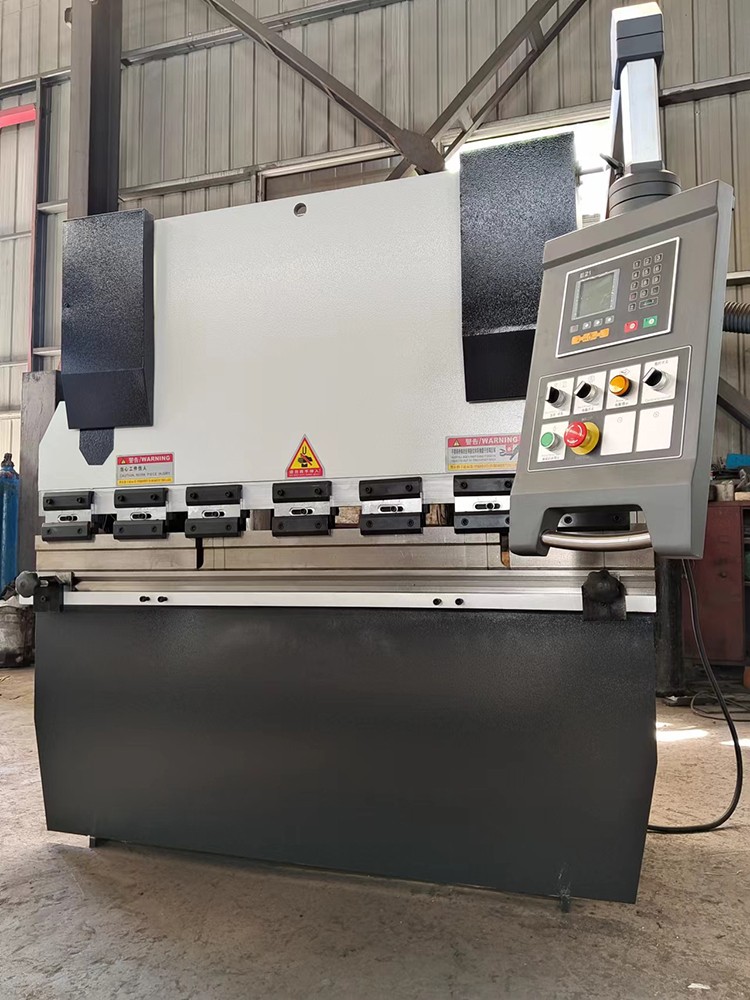

We are a professional bending machine manufacturer with over 10 years of industry experience. Today, we would like to introduce a convenient method for quickly correcting processing errors in bending machines:

Bending machines are widely used in sheet metal processing, but in actual operation, processing errors are inevitable due to factors such as equipment condition, material properties, or improper operation. To improve processing accuracy and reduce rework, operators need to master practical methods for quickly correcting errors. This article will introduce several simple and effective error correction methods to help operators make timely adjustments and ensure processing quality.
1.Inspect and adjust the mold condition.
Mold wear or improper installation is one of the common causes of bending errors.
The correction steps are as follows:
(1)Check the alignment of the upper and lower molds: Ensure that the center lines of the upper and lower molds are aligned. If the deviation exceeds 0.1 mm, readjust.
(2)Confirm the tightness of the mold: Check whether the mold fixing bolts are loose and retighten them if necessary.
(3)Inspect mold wear: If increased radius at the cutting edge or localized wear is detected, replace the mold promptly to avoid affecting the bending angle.
2.Optimize sheet positioning
Sheet displacement during the bending process can cause bending line deviation. The following methods can be used to improve this:
(1)Use a stop device: Adjust the rear stop position to ensure that the sheet is tightly against the positioning surface, reducing errors caused by inaccurate feeding.
(2)Add auxiliary positioning: For long sheets, side positioning blocks can be installed on the bending machine workbench to prevent the sheet from sliding during bending.
(3)Check the clamping force: Insufficient pressure from the clamping device may cause the sheet metal to move. Appropriately increasing the clamping force can improve stability.
3.Correcting bending angle deviations
When the bending angle does not meet requirements, adjustments can be made by modifying equipment parameters or process methods:
(1)Adjusting the slide stroke: If the angle is too large, increase the downward pressure depth appropriately; if the angle is too small, reduce the downward pressure.
(2)Compensating for springback: Different materials have different springback values. Compensation values can be pre-added during programming, e.g., stainless steel can have an additional 1°–2° overbend.
(3)Segmented bending: For long workpieces, the segmented bending method can be used, first bending the ends and then adjusting the middle section to avoid overall deformation.
4.Correcting bending position errors
Bending line position deviations are typically caused by programming errors or inaccurate sheet metal positioning. Correction methods include:
(1)Recalibrating the backstop: Check the backstop coordinates in the CNC system to ensure they match the actual position.
(2)Manual fine-tuning: For small batches of workpieces, manually adjust the backstop position and measure the correction after a test bend.
(3)Check program parameters: Verify that the bending sequence and positioning points are reasonable to avoid cumulative errors from multiple bends.
5.Optimize process parameters
Reasonable processing parameters can reduce errors:
(1)Reduce bending speed: High-speed bending may cause sheet displacement. Appropriately reducing the speed can improve accuracy.
(2)Adjust V-groove width: Excessively wide V-grooves increase the risk of sheet deformation. Generally, a groove width of 6–8 times the sheet thickness is selected.
(3)Avoid continuous bending: For parts with multiple bending operations, it is recommended to inspect the dimensions after completing each bend before proceeding to the next operation.
6.Daily Maintenance and Calibration
Regular maintenance of equipment can reduce the probability of errors occurring:
(1)Check the hydraulic system: Ensure stable oil pressure to avoid inconsistent bending force due to pressure fluctuations.
(2)Clean the guide rails and sliders: Dust or metal shavings may affect the movement accuracy of the sliders, so they need to be cleaned and lubricated regularly.
(3)Calibrate the CNC system: Perform regular origin calibration to ensure that the control system is synchronized with the actual mechanical position.
Correcting bending errors requires a combination of equipment adjustments, process optimization, and operational standards. In actual production, it is recommended to first quickly resolve issues through simple adjustments (such as positioning optimization and parameter fine-tuning). If requirements still cannot be met, consider replacing the mold or repairing the equipment. At the same time, establishing daily inspection records can help identify potential issues in advance and reduce the occurrence of batch errors.
If you are interested in bending machines, please contact us.
 Address:Room 1202, Detaitang Building, No. 118 Huaguang Road, Zhangdian District, Zibo, Shandong
Address:Room 1202, Detaitang Building, No. 118 Huaguang Road, Zhangdian District, Zibo, Shandong WhatsApp:+8615653328535
WhatsApp:+8615653328535 Wechat: +8615965331535
Wechat: +8615965331535  E-mail:zs@sdsmachinery.com
E-mail:zs@sdsmachinery.com